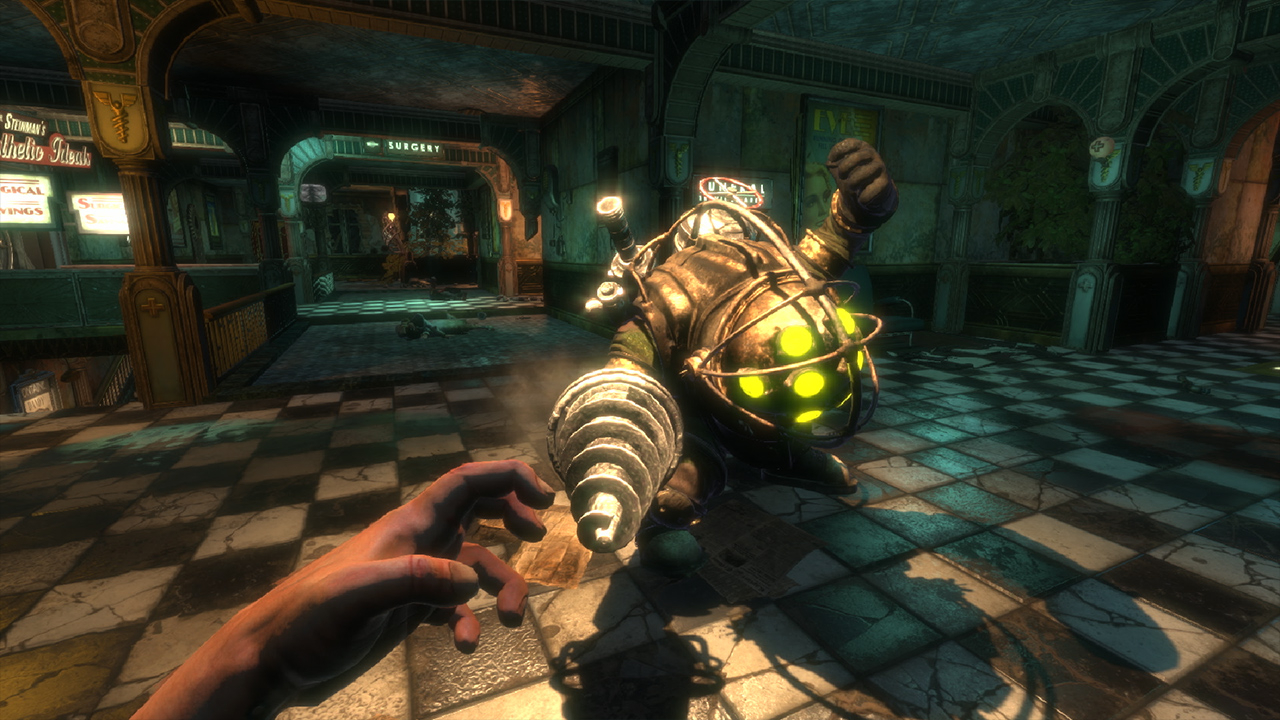All the way back in 2011, Ken Levine, the creative director of what was then Irrational Games, announced that a new installment in the BioShock series was being planned for Sony’s PlayStation Vita platform. At the time, much wasn’t known about the project, but the thought of seeing the critically-acclaimed shooter franchise come to a handheld platform in some manner was exciting for a multitude of reasons.
Unfortunately, as we all now well know, BioShock for Vita never saw the light of day and was canceled due to what seemed to be a lack of an agreement between Sony and 2K Games. Even though this planned title wasn’t going to be your typical BioShock experience and was instead set to be a turn-based tactics game, the falling through of this Vita iteration closed the door on bringing the series to a dedicated portable platform.
Nearly a decade later and the BioShock series has now at long last come to a handheld via the Nintendo Switch. While what we’ve been given isn’t anything altogether new like the Vita game would have been, all three mainline BioShock titles make for wonderful additions to the larger Switch library and each has the benefit of being a solid port to boot.
BioShock: The Collection on Switch is identical to the package that released on PS4 and Xbox One back in 2016. All three entries — BioShock, BioShock 2, and BioShock Infinite — can be found in this bundle along with each respective game’s accompanying DLC. The overall collection remains solid and has enough content to keep you busy for quite awhile, if you choose to play all of it.
Of course, the real question with this version of the game though is, “How does it run and perform on the Switch?” Perhaps unsurprisingly, all three games play and look relatively great on the platform. This isn’t a major shock considering the roots of all three titles were from the last generation, meaning that they have more easily been ported to the console compared to games from the current generation.
Visually, each BioShock game retains the iconic feel and look of its given locations without having to sacrifice too much on the graphical front. The eerie, dark corridors of Rapture from BioShock and BioShock 2 are still haunting to explore, while BioShock Infinite’s Columbia still makes for one of the more breathtaking and unique locales ever seen in any video game. The only noticeable difference, other than a general dip in the resolution compared to other versions of BioShock: The Collection, comes in the way of the textures being a bit less defined. Character models don’t look as sharp as normal and getting too close to walls and other objects in each game prove that they’re a bit muddied. In the end, though, this isn’t too much of a problem and didn’t lead to any unenjoyment while playing.

On the performance front, I noticed no dips in frame rate in all three games, even once combat situations ramp up a bit. This stayed true in both handheld and docked modes, which was definitely a big positive. Performance seems to be one of the areas that a lot of games go back and forth on with the Switch, even when it comes to first-party games from Nintendo. For it to be largely great here with BioShock: The Collection on the Switch made me realize how good of a job that Virtuos did with this port.
Strangely enough, the only time I really saw any hitching or frame rate problems came during the hacking portions of the original BioShock. I’m not sure what it is under the hood that would make these pipe-making puzzles cause the game to slow down, but this was one of the only instances that I saw any particular problems.
One of the things that I also noticed was a bit odd came in the way of the options presented in each game. From what I examined, all three BioShock games largely have identical settings, except for one minor change in the original title. The first BioShock has the option for an expanded FOV, meaning that your peripheral view can be widened if need be. This is something that was true in other versions of BioShock: The Collection on PS4 and Xbox One, too, but I always wondered why it was never added to BioShock 2 or Infinite. It still remains an odd thing to me here as I revisit this package.

I also have to just say that in a general sense, I still cannot get down with shooters on the Switch. I might very well be alone in this, but I find the Joy-Cons to be so uncomfortable when it comes to playing shooters for extended periods of time. I got way more enjoyment out of BioShock: The Collection once I switched (pun intended) to my Pro Controller and began playing either on my TV or via my Switch with it sitting upright thanks to the kickstand. All in all, if you like the Joy-Cons, then more power to you. I wish I liked them more with first-person games.
If you’re a big-time BioShock fan who is looking to revisit the series for the umpteenth time like myself or you’re primarily a Nintendo console owner who has never had access to these games, BioShock: The Collection on Switch is well worth your time. While it obviously can’t match up to The Collection’s counterparts on other current-gen platforms, the work that Virtuous has put into this Switch port has proven to be quite exceptional. At the very least, hopefully this re-release can help satiate the appetite that many have for a new installment in the series, which 2K Games is actively developing right now.
The post BioShock: The Collection on Switch Finally Makes Good on the Franchise’s Promise to Appear on a Handheld by Logan Moore appeared first on DualShockers.
